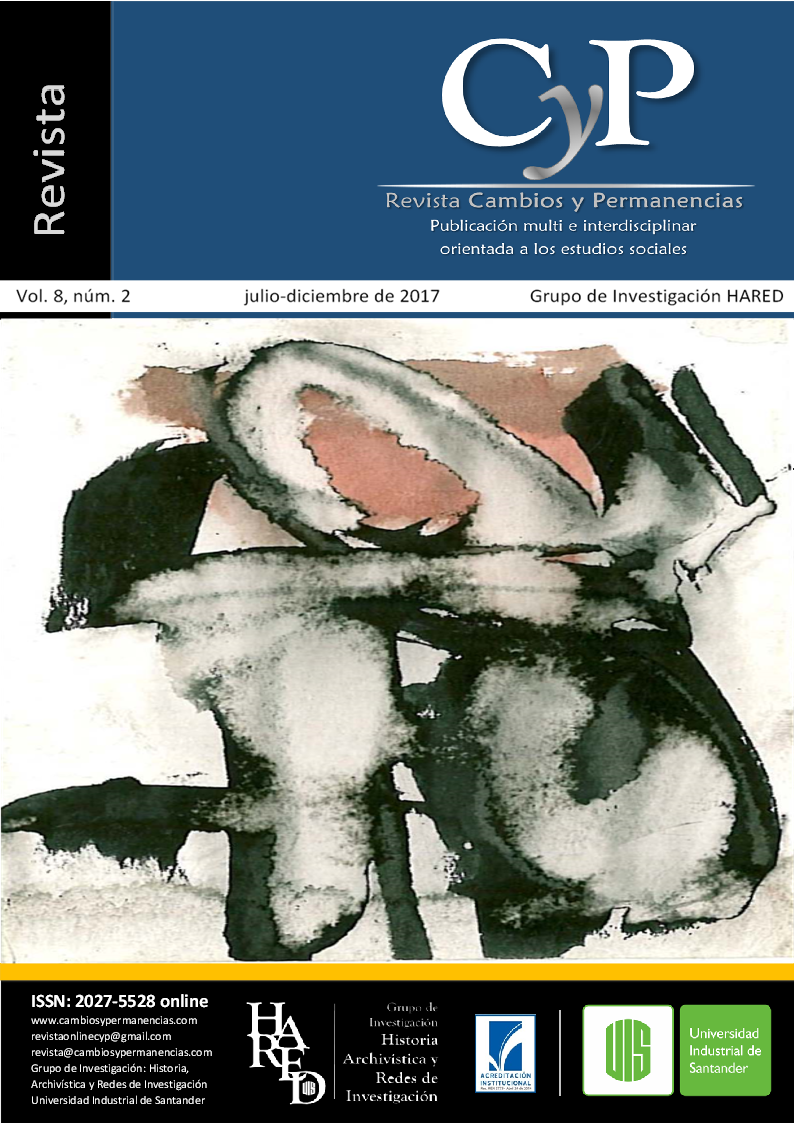Keywords
- Dominant memory,
- photography,
- oblivion,
- political violence,
- (aesth)etic of horror
How to Cite
Abstract
The objective of this text is to present the conceptual tenets and some methodological approaches of the research study called “Las fotografías del ¡Basta ya!: hacia una construcción visual de la violencia política en Colombia” (The photos of ¡Basta ya!: towards a visual construction of political violence in Colombia), which is carried out within the framework of the substantiating seminar “Memoria, territorio y construcción de identidad” (Memory, territory and construction of identity) of the B.A. in Social Sciences in Universidad Pedagógica Nacional in Colombia. The aim is to analyse the 121 photos (plus a gallery of 26 photos) included in the report “¡Basta ya! Colombia: memorias de guerra y dignidad” (Enough! Colombia: memories of war and dignity) published in 2013 by the Group of Historical Memory. In this research photos are understood as a kind of narrative that engages in a dialogue with the written text and with other photographic images. As historic-social products photos give an account of the political context in which they were taken and bring to the present the traces of the past. Indeed, there is no memory without images. Photographic images represent the past in a fragmented way, they construct corresponding meanings and facilitate the transmission of past events to new generations. What do the photos of “¡Basta ya!” show? What kind of memory do they construct? What relation to the past do they facilitate? In what way do these photos visually construct the victims of the socio-political violence in Colombia?
Downloads
References
BartheS, R. (2008). La cámara lúcida. Nota sobre la fotografía. Buenos Aires: Paidós
Berger, J. (1976). Modos de ver. Recuperado de http://www.historiadeltraje.com.ar/archivos/Modos-de-Ver-John-Berger.pdf
Da silva, L. (2010). Pasados en conflicto. De memorias dominantes, subterráneas y denegadas. En E. Bohoslavsky; M. Franco; M. Iglesias; y D. Lvovich (Editores). Problemas de historia reciente del Cono Sur. Vol. 1, Buenos Aires: Prometeo libros, Universidad Nacional de General Sarmiento.
Didi-huberman, G. (s.f.). Cuando las imágenes tocan lo real. Recuperado de https://www.macba.cat/uploads/20080408/Georges_Didi_Huberman_Cuando_las_imagenes_tocan_lo_real.pdf
Dussel, I. (2012). Educar la mirada. Reflexiones sobre una experiencia de producción audiovisual y de formación docente. En, Dussel, I. y Gutiérrez, D. (compiladoras). Educar la mirada. Políticas y pedagogías de la imagen. Buenos Aires: Manantial, Flacso, OSDE
Dussel, I. y Gutiérrez, D. (Compiladoras) (2012). Educar la mirada. Políticas y pedagogías de la imagen. Buenos Aires: Manantial, Flacso, OSDE
Feld, C. (2010). Imagen, memoria y desaparición: una reflexión sobre los diversos soportes audiovisuales de la memoria. Aletheia, 1(1). Recuperado de http://www.aletheia.fahce.unlp.edu.ar/numeros/numero-1/feld-claudia.-imagen-memoria-y-desaparicion.-una-reflexion-sobre-los-diversos-soportes-audiovisuales-de-la-memoria
Feld, C. y Stites, J. (compiladoras) (2009). El pasado que miramos. Memoria e imagen ante la historia reciente. Buenos Aires: Paidós.
Halbwachs, M. (2004). Los marcos sociales de la memoria. Barcelona: Antropos Editorial.
Jelin, E. (2012). Los trabajos de la memoria. 2ª. ed. Lima: Instituto de Estudios Peruanos –IEP.
Langland, V. (2005). Fotografía y memoria. En, Jelin, E. y Lomgoni, A. (comps.). Escrituras, imágenes y escenarios ante la represión. Madrid: Siglo Veintiuno editores.
Richard, N. (2013). Fracturas de la memoria: arte y pensamiento crítico. Buenos Aires: Siglo Veintiuno Editores.
Sontag, S. (2013). Ante el dolor de los demás. Barcelona: Debolsillo.
Todorov, T. (2008). Los abusos de la memoria. Barcelona: Ediciones Paidós Ibérica.


